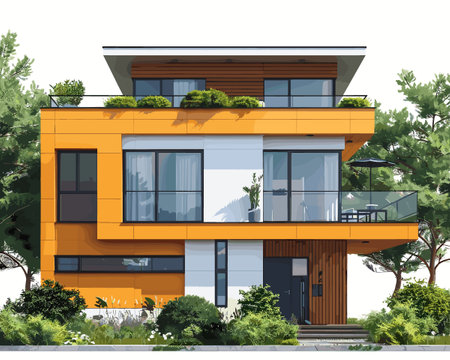Understanding Feng Shui Principles
Feng Shui, an ancient Chinese practice, is centred on creating harmony between individuals and their living spaces by balancing energy, or “Qi.” At its core, Feng Shui aims to optimise the flow of positive energy through careful arrangement of furniture, thoughtful use of colours, and mindful selection of decorative elements. For British couples seeking a harmonious home life, understanding these principles can offer fresh perspectives on enhancing relationships and promoting wellbeing. In the context of modern British homes—often a blend of tradition and contemporary design—Feng Shuis focus on balance and interconnectedness can be particularly relevant. By appreciating how the placement of objects or the orientation of rooms influences mood and interaction, couples can foster a more supportive and nurturing environment. Adapting these timeless concepts within the unique architectural styles and lifestyles found across the UK allows for a meaningful integration that respects both cultural heritage and personal needs.
2. Why Feng Shui Appeals to Modern British Couples
In recent years, there has been a notable surge in the popularity of wellness and mindfulness practices among British couples. This growing interest can be attributed to a collective desire for holistic living that promotes not just physical health, but also emotional and mental well-being. Traditional Feng Shui, rooted in Eastern philosophy, offers a framework that aligns with these aspirations, making it increasingly appealing within the context of modern British homes.
Cultural Integration and Diversity
The United Kingdom is renowned for its cultural diversity, especially in urban centres such as London, Manchester, and Birmingham. Many British couples are embracing global traditions as part of their lifestyle choices, seeking meaningful ways to create harmonious living spaces. By incorporating Feng Shui principles, couples find an opportunity to express their openness to multiculturalism while enhancing the ambience and functionality of their homes.
Analysis: Motivations Behind the Trend
| Motivation | Description | Relevance to British Couples |
|---|---|---|
| Wellness Focus | Desire for improved mental health, relaxation, and stress reduction. | Feng Shui promotes balanced energy flow, supporting overall well-being. |
| Mindfulness Practices | Adoption of rituals and habits that encourage present-moment awareness. | Creating mindful spaces at home fosters connection and tranquility between partners. |
| Cultural Curiosity | Interest in exploring non-Western philosophies and lifestyles. | Feng Shui provides a tangible way to celebrate diversity within domestic life. |
| Functional Design | Pursuit of interiors that are both aesthetically pleasing and practical. | Feng Shui principles guide layout decisions for optimal comfort and utility. |
The Role of Community and Social Influence
Furthermore, social media platforms and lifestyle publications have played a significant role in popularising Feng Shui among British couples. Influencers and designers frequently showcase how traditional Eastern concepts can blend seamlessly with contemporary British aesthetics. This exposure not only normalises the practice but also sparks conversations around cultural respect and creative adaptation. As a result, integrating Feng Shui is seen not merely as an interior design choice but as a reflection of progressive values and inclusive thinking within modern relationships.

3. Adapting Feng Shui for British Architecture
Integrating traditional Feng Shui principles into modern British homes requires a thoughtful approach, particularly due to the unique characteristics of local architecture. Whether it’s a classic Victorian terrace, a semi-detached house, or a period property, each style presents distinct opportunities and challenges for couples seeking harmony and balance.
Terraced Houses: Maximising Flow in Compact Spaces
Terraced homes, common throughout the UK, often have narrow frontages and elongated layouts. To optimise energy flow (qi), consider using mirrors strategically to expand perceived space and light. Ensuring that the main entrance is clear and inviting helps attract positive energy. Since rear gardens are typical, treating them as ‘bright halls’ by keeping them tidy and well-lit can further support harmonious living for couples.
Semi-Detached Homes: Enhancing Connectivity
Semi-detached houses offer more flexibility with side access and additional windows. Couples should focus on maintaining an unobstructed pathway from the front door to the back garden, allowing qi to circulate freely. Placing plants near shared walls can soften harsh lines and promote tranquillity. Bedrooms, ideally located away from the street, benefit from soft furnishings and calming colours to nurture intimacy and restful sleep.
Period Properties: Respecting Heritage While Inviting Balance
British period properties boast original features like fireplaces, high ceilings, and bay windows. While honouring these historical elements, couples can introduce Feng Shui through subtle modifications—such as arranging furniture to create smooth movement between rooms or using earth tones and natural materials to anchor the home’s energy. Mindful placement of water features or artwork in living areas can symbolise abundance without compromising architectural integrity.
Practical Considerations for All Home Types
No matter the property style, decluttering is central to both Feng Shui and British sensibilities. Removing unnecessary items not only enhances qi flow but also creates a serene environment for relationships to thrive. Couples should collaborate on personalising their shared spaces with meaningful décor, reinforcing mutual respect and shared goals within their home.
Conclusion: A Thoughtful Fusion
Adapting traditional Feng Shui principles within the context of British homes is both practical and rewarding for couples. By acknowledging the unique features of terraces, semis, and period houses while applying core concepts of balance and flow, couples can cultivate a nurturing environment that supports both their relationship and overall well-being.
4. Key Feng Shui Techniques for Couples
Integrating traditional Feng Shui principles into contemporary British homes can enhance harmony, intimacy, and overall wellbeing for couples. Below, we break down core techniques that are both practical and effective in a UK context, focusing on bedroom arrangement, colour schemes, and the use of shared spaces.
Bedroom Placement and Arrangement
The bedroom is central to relationship energy in Feng Shui. In the British home, this means positioning the bed with a clear view of the door without being directly in line with it—known as the “command position.” Ideally, beds should have solid headboards placed against a stable wall for support and security. Avoid placing the bed under sloped ceilings or exposed beams often found in period properties across the UK, as these features can create oppressive energy.
Colour Palettes Suited to British Interiors
Colour plays a vital role in setting the mood within shared spaces. For couples, opt for warm, soft tones that promote relaxation and connection. Below is a breakdown of recommended colour choices suited to British interiors:
| Area | Feng Shui Colour Recommendation | British Context Example |
|---|---|---|
| Bedroom | Pale pinks, warm creams, gentle blues | Dulux Soft Peach, Farrow & Ball Calamine |
| Lounge / Sitting Room | Earthy neutrals, light greens | Crown English Pear, Little Greene Sage Green |
Optimising Shared Spaces
Shared areas such as lounges or dining rooms play a significant role in fostering positive chi between partners. Arrange furniture to encourage face-to-face interaction—sofas facing each other rather than towards screens. Incorporate pairs of items (like lamps or cushions) to symbolise partnership and balance. In British homes where space may be limited, especially in terraced houses or flats, select multi-functional furniture that supports togetherness while maintaining comfort.
The Role of Personal Touches
Add meaningful photos or art depicting happy moments together; avoid solitary imagery which may evoke separation. Choose décor reflecting shared interests—perhaps a framed map of a favourite holiday destination within the UK or mutual hobbies—to reinforce unity and shared purpose.
Avoiding Common Pitfalls
Steer clear of clutter—especially under beds or in corners—as it stagnates energy flow. Replace wilting plants with fresh ones and ensure all items are in good working order to prevent blockages in your relationship’s energy. By making these considered adjustments using familiar British terminology and style sensibilities, couples can create an environment that nurtures both romance and domestic harmony.
5. Common Misconceptions and How to Avoid Them
When introducing traditional Feng Shui into modern British homes, particularly for couples, several misconceptions often arise. These misunderstandings can hinder the effectiveness of Feng Shui or even lead to unnecessary changes that do not suit the British context. Below, we analyse some prevalent myths and provide practical guidance to help couples make informed choices.
Mistaking Feng Shui for Mere Decoration
A common error in the UK is viewing Feng Shui as simply an aesthetic approach, focusing solely on object placement or oriental-style décor. In reality, Feng Shui is about energy flow, balance, and harmony within a space, rather than adhering to a particular visual style. Couples should prioritise the principles behind Feng Shui—such as clear pathways and balanced arrangements—over superficial symbolism.
Overemphasis on Traditional Symbols
Many believe that filling their homes with Chinese ornaments like lucky coins, dragons, or bamboo plants is essential for good Feng Shui. While these symbols hold significance in traditional Chinese contexts, their presence is not mandatory in British homes. Instead, it’s more effective to focus on decluttering, maintaining natural light, and ensuring smooth movement throughout shared spaces—elements that transcend cultural boundaries.
Misunderstanding Compass Directions
Another misconception involves rigidly applying compass-based rules without considering a home’s architectural realities. Some may try to replicate textbook directions without acknowledging differences in building orientation typical of British properties. Couples are advised to adapt basic directional concepts (e.g., keeping bedrooms restful and kitchens lively) to fit their unique floorplans rather than following them dogmatically.
The Myth of ‘Quick Fixes’
There is a temptation to seek instant results through single-item solutions—such as placing a mirror or crystal in a specific spot—expecting immediate harmony or luck. Authentic Feng Shui requires ongoing attention to spatial relationships and daily habits, not just one-off changes. Couples should view these adjustments as part of an evolving process rather than expecting overnight transformation.
Practical Advice for British Couples
To avoid these pitfalls, couples should focus on foundational principles: create open spaces for communication, maintain tidiness, and use colours or materials that resonate personally. Consulting reputable sources or local experts familiar with both Feng Shui and British architecture can further bridge cultural gaps and ensure adaptations are both meaningful and practical for everyday life.
6. Sourcing Feng Shui Items Locally and Sustainably
Integrating traditional Feng Shui principles into modern British homes need not require importing exotic items from afar. In fact, sourcing artefacts, furniture, and décor locally can enhance both the authenticity of your space and your commitment to environmental sustainability. For couples looking to harmonise their shared environment with Feng Shui while respecting British culture and eco-friendly values, here are practical guidelines to consider.
Understanding Key Feng Shui Elements
Before shopping, clarify which Feng Shui elements—such as wood, water, metal, earth, and fire—you want to emphasise in your home. Look for items that naturally correspond with these elements: wooden furniture for growth and vitality, ceramics for grounding energy, or gentle water features for flow and tranquility.
Exploring British Shops and Markets
The UK offers a wealth of independent boutiques, antique shops, and artisan markets where you can find objects imbued with character and local history. Consider exploring vintage fairs or charity shops for unique pieces such as brass bowls (metal), upcycled wooden shelves (wood), or hand-thrown pottery (earth). Not only do these items support local businesses and reduce waste, but they also blend seamlessly with a contemporary British aesthetic.
Eco-Friendly Choices
Sustainability is central to modern British values. Seek out furniture made from reclaimed wood or recycled materials; opt for décor crafted by local artists using ethical practices. Upcycling old items—like turning a classic British teapot into a plant holder—can add both personality and positive chi to your home without the environmental cost of new manufacturing.
Respecting Local Culture and Blending Styles
Feng Shui need not look overtly ‘Eastern’ to be effective. Select décor that echoes traditional British design—think soft wool throws, stoneware vases, or landscape prints—that still aligns with Feng Shui’s focus on harmony and balance. By thoughtfully curating your space with locally-sourced, sustainable items, couples can create a nurturing home that honours both ancient wisdom and contemporary British life.


